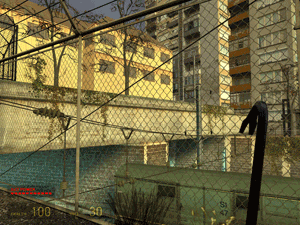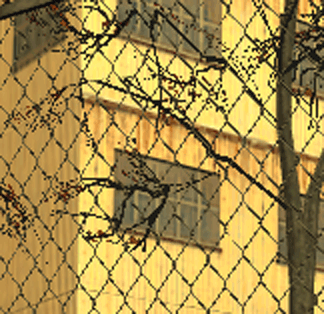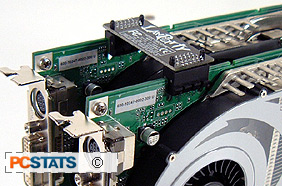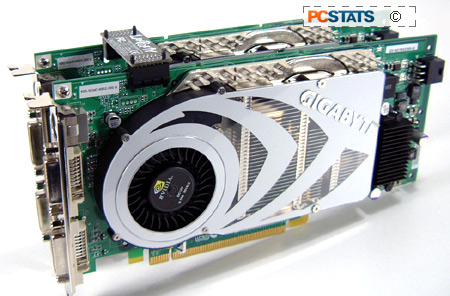7800 GTX Image Quality Tests
Easily one
of the biggest features of the GeForce 7800 GTX series of graphics cards is the
new Transparency Antialiasing feature. If you are interested in the technology
behind please check out PCSTATS' GeForce 7800 GTX videocard preview.

(Click on image to see full size screenshot)
Between regular AA and Transparency Multisampling AA is very
little but compared to Transparency Supersampling AA is quite pronounced. Look
specifically at the fence, AA and Transparency MSAA methods still produce quite
a bit of jagged lines because the pixels are not at the edge of the polygon.
With Transparency SSAA however, SuperSampling renders each entire frame at a
higher resolution then blends the colour and shade of areas where there is a
large amount of difference between pixels.

4x AA With MSAA |

4x AA With
SSAA |
The fence section was blown up to 200% to show
the difference between the AA modes and here we see that the fence and branches
from the tree still have jagged lines despite AA being enabled. With
Supersampling, the edges are much smoother and easier on the eyes.
SLI of the future
 The GeForce 7800 GTX
will be fully SLI compatible, as evidenced by the little slot on the top of the
card. The potential of this unholy union should have game fanatics drooling.
Apparently, future versions of nVidia's Forceware will also allow SLI with cards
from different manufacturers (provided they use the same GPU). The GeForce 7800 GTX
will be fully SLI compatible, as evidenced by the little slot on the top of the
card. The potential of this unholy union should have game fanatics drooling.
Apparently, future versions of nVidia's Forceware will also allow SLI with cards
from different manufacturers (provided they use the same GPU).
Also in store for SLI
enthusiasts with future Forceware versions is a new 16xAA mode. The video memory
requirements for 16xAA are huge, so it's no surprise that nVidia has chosen to
restrict it to SLI. Once we begin to see videocards shipping with 512MB of
memory as a standard, 16xAA might move into the mainstream.
Purevideo
The nVidia
PureVideo video capture/playback technology that debuted on the 6xxx line of
GPUs is back on the 7800 with some enhancements and a new feature.  The
new feature is High-Definition Spatial-Temporal
De-Interlacing, a mouthful which boils down to better high-definition video
playback. The additional horsepower of the 7800 GPU is used to improve other
facets of video playback and capture also, which should lead to the new graphics
processor being a mean multimedia machine. The
new feature is High-Definition Spatial-Temporal
De-Interlacing, a mouthful which boils down to better high-definition video
playback. The additional horsepower of the 7800 GPU is used to improve other
facets of video playback and capture also, which should lead to the new graphics
processor being a mean multimedia machine.
Power draw and PSU's
The 7800
GTX does not require any more power than the 6800 Ultra, at least according to
nVidia. The minimum required power supply wattage for a 7800 GTX system is
350Watts, same as the the 6800 Ultra.
How is this possible? nVidia has used a combination
of the lower power requirements of the 110nm process and a clock gating
mechanism (clock gating involves turning off or slowing the clock signal to
certain units of an integrated circuit when they are not being used), to achieve
a notable milestone: Higher performance at slightly lower power levels.
This means that nVidia was able to make their
reference 7800 GTX card without using an enormous cooler, so it will not
dominate the empty slot next to it on your motherboard. The 7800 GPU might have
a bright future with nVidia's mobile line of graphics products too. Next up,
overclocking with a phase change cooler!
|
